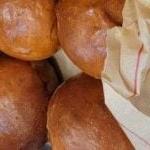Culinary and Hospitality Pathway
Culinary and Hospitality Pathway
Is this the right pathway for me?
- Do you love to cook for and host other people?
- Are you passionate about bringing joy to others?
- Would you like to work in a fast-paced, sometimes stressful environment?
What is Culinary Arts and Hospitality?
Culinary Arts and Hospitality is the preparation, cooking, and presentation of food and meals. Many people in this field work in restaurants or hotels, as cooks or chefs, but also in roles like hosts, servers, greeters, and more. Catering is a big business that involves preparing food for large events including weddings, conventions, or meetings.
What sort of work would I do?
As a cook or chef, you will plan menus, prepare food to be used, cook and bake as well as prepare the final presentation for the customer. Waiters and hosts greet customers, take their orders, serve their food, and deliver great customer service. You might purchase food, manage inventory, or maintain equipment.
Leads to these Careers
- Caterer
- Certified Personal Chef
- Chef and Head Cook
- Dietitian and Nutritionist
- Food Preparation Supervisor
- Food Service Manager
- Pastry Chef
- Restaurant Cook or Owner
- Sous Chef
In-Demand Occupations
| Typical Education Required | Career Title | Average Annual Salary | Job Outlook in WA State (2020-2030) |
|---|---|---|---|
| Less than high school | Baker | $40,267 | 18% increase |
| High School | Chef or Head Cook | $74,730 | 35% increase |
| Associate Degree (or Certificate) | Chef or Head Cook | $74,730 | 35% increase |
| Bachelor’s Degree | Dietitian or Nutritionist | $77,412 | 21% increase |
What Courses can I take now?
Check with your school counselor and administrators to find out which classes are available at your school.
Clubs and Activities at SPS
Interested in learning more about culinary and hospitality? SPS students have the opportunity to deepen and expand their knowledge alongside their peers through Family, Career, and Community Leaders of America (FCCLA). FCCLA hosts competitive events, provides leadership opportunities, and helps students prepare for career and college. Find a chapter at your school here!
What training do I need after high school?
Depending on the career track you are most interested, in, your training after high school may vary. We recommend that students interested in culinary at a minimum pursue some post-secondary training (associate’s degree or certificate) to make them more competitive for positions in a restaurant setting. Below are examples of programs of study for students after high school:
Certificate or Associate’s Degree at Seattle Central College or South Seattle College – Free tuition available to Seattle Public Schools graduates through Seattle Promise, these well-respected Culinary Arts Programs expand students’ culinary horizons. Students learn to prepare menus, create dishes and use cutting-edge culinary technology. Students at South Seattle College learn fundamentals of Asian cuisines, pastries, butchery, and much more! Interested students should apply early (during summer following 11th grade) to reserve their spot in the cohort, as this program fills up quickly. This is a ~2 year commitment and includes kitchen fees for each course.
Culinary Institute of America – Widely regarded as the top culinary institute in the United States, Culinary Institute of America has campuses all over the country and globally. CIA offers Associate Degrees, Masters Degrees, Certificates, and More. Explore their course offerings to get an idea of the trainings that are available to you. Training at CIA is quite costly, and careful consideration of the pros and cons should be taken into account before students pursue this course of study.
Other Regional Programs — Bates Technical College, Bellingham Technical College, Clark College, Columbia Basin College, Edmonds Community College, Lake Washington Institute of Technology, Olympic College, Skagit Valley College, Washington State University
Explore the right fit post-secondary pathway for you using the SuperMatch college feature on Naviance!
More questions? Contact us at cte@megacnru.com!



